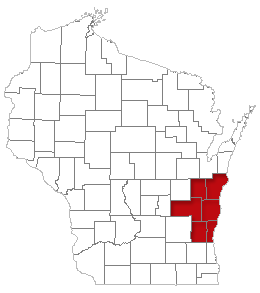Despite a long, harsh winter, it seems that spring is finally in the air. While that means melting snow and rising temperatures, it also signifies the start of one of the most dreaded and well-known unofficial seasonal events: spring cleaning.
Trying to tackle an effective spring maintenance and cleaning project for a large commercial or industrial facility can seem like a daunting task. Here are three things to keep in mind so you don’t overlook any of the important points this spring.
1. Pest management
Flowers and children aren’t the only ones that will be poking their heads outside more this spring. The seasonal thaw means that we’ll once again start seeing an increase in pest activity. Whether it’s insects crawling or flying their way into your facility or rodents making themselves unwanted house guests, the emergence of spring is the perfect time to beef up your defense against pesky critters.
Many of these are simple, such as reducing the number of attractive factors pests may latch onto. For example, if you want to keep bees and wasps away, reduce the amount of colorful, fragrant flowers around your facility, since insects flock to these types of vegetation for feeding purposes. Similarly, roaches, ants and mice can all be enticed to make an appearance by the presence of nearby garbage and food. Consider keeping your dumpsters as far away from your building as possible to reduce the chance that pests drawn to your trash end up inside.
A big part of pest management is choosing a removal method that’s both effective and safe. While chemical pesticides and fumigation can eliminate the majority of insects, they can have negative side effects on your building’s occupants. For this reason it may be a better idea to explore non chemical means of pest management, such as sticky traps or electric bug zappers.
2. Grounds Keeping
Now that the snow is gone, facility managers can once again interact with their lawns, parking lots and other outdoor areas. Chances are much of your grass didn’t make it through the winter, and early spring is the prime season for planting new seed. HGTV recommended helpful tips to ensure you get the most out of your landscaping efforts. For example, one of the most important factors in preparing your lawn for warmer weather is the soil itself – be sure to test it to make sure the pH levels are ideal. Proper watering practices are also important, since overwatering or under watering your grass can have equally detrimental effects. According to the source, you likely only need to water your grass once a week – but be sure to water deeply, so the roots are properly irrigated.
Make sure you don’t neglect your other outdoor spaces. The cold winter temperatures and the subsequent thaw may have left your parking lots or sidewalks frackured with cracks due to weather-related expansion and contraction. Make sure to note these in your maintenance reports in your CMMS so you can address them in your upcoming building maintenance schedules.
3. Equipment and infrastructure
Just as you’ve been hiding away from the cold weather indoors all winter, so too has much of your maintenance equipment and essential infrastructure been hibernating the past several months. This can be your lawn care tools or it can mean more fundamental infrastructure like your HVAC system and air conditioning. Regardless, before you use any of your seasonal equipment, make sure you conduct a thorough inspection to make sure everything is in working order and nothing needs to be repaired or replaced.







